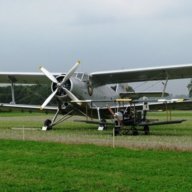In the 1970s, I always thought that in the future, we'd need to alter the frequency spectrum a bit as traffic increased. . . we were using 119.1 Unicom for ALL unspecified airstrips and this worked fine. . .and sometimes used 'SmokeNet' the CFA channel if wandering about in the WoopWoop, always someone to chat to there ( If you were lucky enough to have HF installed in your flying appliance that is. . . I actually used Ham Radio, on the 2 metre VHF FM band in some cases where I knew there was a 'Useful' Ham that I could connect with. . .but that entailed carrying a Converted Crammond Carphone taxi rig with an extra aerial, and I'm sure it was not Kosher. . .but for those of you who have actually flown in the North of WA and in far North Queensland,. . .I'm sure you understand how lonely it can be if there's no one to talk to when flying over that Glorious and mostly empty country. . . Jeeze,. . .I Really DO Miss it. . .
What year did they start using the Y--- designator for airfields ?
UK Airfields only have a 'E' locator if they are licenced, maybe it's the same in Aus ? I dunno . . .All I ever had was the VFG, and a flipchart full of disparate strips all over the bloody place, with no radio frequency advertised,. . we just used 119.1 unless otherwise indicated. . . AND nowadays, the map and chart NAV system has been junked in favour of GPS for flight trining,. . possibly due to the large amount of Airspace incursions,. . though you still have to carry a current paper chart by law. . . Hmmm. . . Advancement ? or what. . ? I Learned to Navigate ( In Australia ) with the traditional methods, and, touch wood, , I've never, EVER busted controlled airspace. . . .So I don't know yet whether this is a good or a bad thing as regards training fresh pilots. . . time will tell. . .




